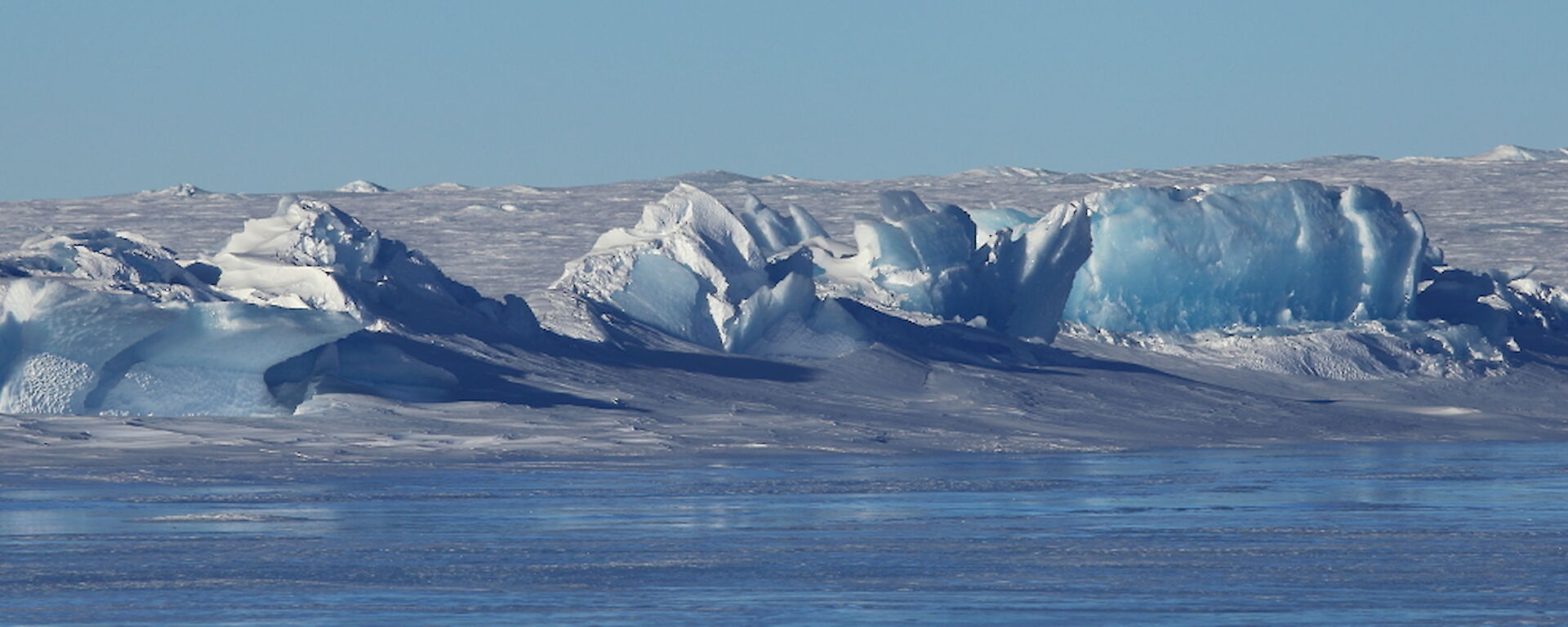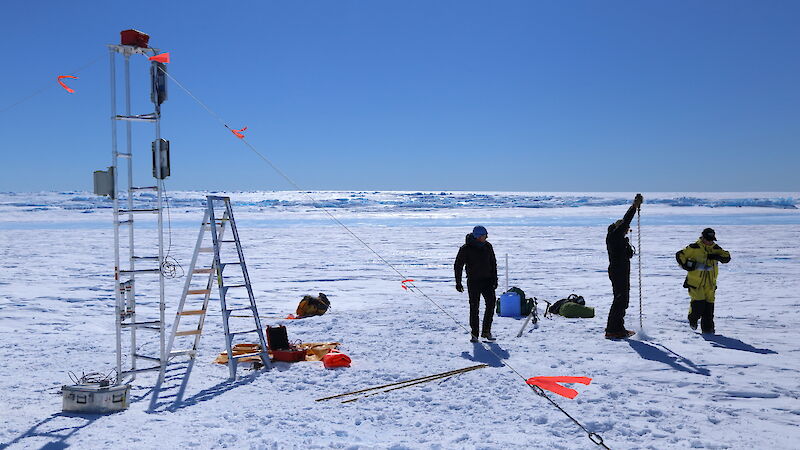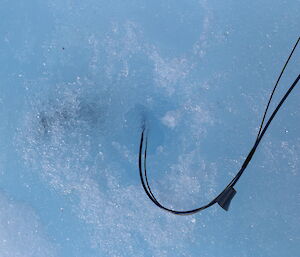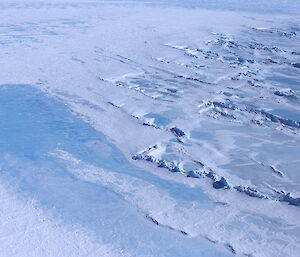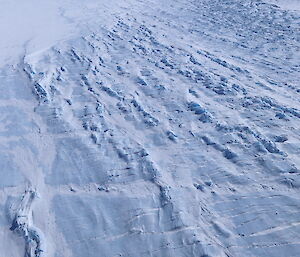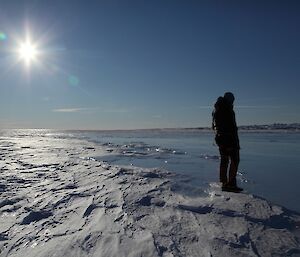29 November — 6 December
Mid-day Tuesday, 29 November — after a late evening return from the reconnaissance, we're finally on the ground at Sørsdal Glacier with our equipment, ready to get to work.
The site we checked out the day before names itself. “Horseshoe Lake” is a big crescent of what we think is liquid water on the north side of the Sørsdal Glacier. From a ground level perspective, it’s pretty clear why there should be a lake here. The helicopter lands in a bowl where the horizon is maybe 500 metres away. In all directions, the glacier rises up noticeably. This is where the melt water will collect. For good measure we decide we should move the location for our instrument tower to a spot further away from the low point of the bowl. The last thing we want is for all of our electronics to end up in the lake once it fills for real. For now, though, the lake has barely started to form. What we've seen from the air and thought of as a lake is really a shiny ice surface, smooth in places like an ice rink, covering maybe a hand’s width of water underneath in the places where we drill to take a look.
The weather holds; just a steady breeze with temperatures around freezing and blinding sunlight to contend with. Two hours in, with Gideon and Nick as Field Training Officers and Lotter and Ladge the electronics engineers on hand to help, our instrument tower is up, its feet drilled three metres into the ice, the guy-lines are anchored and there’s a camera on top, ready to start taking pictures of the lake 12 times a day.
My fingers are hurting. The choice of gloves for fiddling with electronics in Antarctica is clearly a delicate one. Fine motor skills not being my strong suit, I opt for thin.
We spool out a pressure transducer — an instrument that measures water pressure at the bottom of the lake, and will allow us to record lake depth every 20 minutes. It goes in the shallow puddle we explored earlier, at the lowest point in the depression. We've managed to get to the site in time, before the lake has fully formed, ready to monitor its entire evolution, from formation in the spring to whatever it does later in summer and over winter. That’s the part of the lake evolution we want to understand better. Does it drain? Where does the water go? Does it affect the flow of the glacier?
On the far side of the lake we can see strange keels of ice poking vertically out of the glacier. It’s not our first glimpse of these. When we first flew over the Sørsdal earlier in the month, we recognized that the lakes we're planning to study are full of weird and wonderful features like these keels, for which we have no good explanation yet. For now though, they remain out of reach. Safety demands that we do not venture across the frozen lake surface all the way without extensive probing, and time is running out for the day. Our camera and pressure transducer will hopefully shed light on how they form. For now, it’s back to Davis, with a sense of having achieved part of our science plans.
For the rest of the week we're busy preparing for our next deployment further up the glacier. The next instrument tower will be more complicated. Having anticipated that water may collect under the ice surface, not just on top, we've come to Davis with temperature sensor cables that can detect changes in temperature at different depths in the ice, and record where and when water forms and collects. For me, testing these sensors for deployment means a few trips to the walk-in freezer on station, kept at a constant −18C. Finally a chance to get all my cold weather gear out, and feel like a real Antarctic explorer; until someone points out that the freezer actually works as a heater in winter, when it’s much colder outside. Eleri, in the meantime, prepares equipment for the second half of the season, ready for Sue and Tom to take over.
There’s another chance to take in the sights. The sea ice is still solid, and we both join another hike to Gardiner Island to see the penguins. I feel like I’m in a natural history documentary. Penguins everywhere, the place smells like a petting zoo, but with exotic views of icebergs sitting in the shimmering open waters on the other side of the island. Adélies have an almost human quality about them. “Human” as in toddler — exceptionally curious, they are also cutely clumsy when walking on land, and will follow any individual in the group brave enough to explore something new. Like the strange tall and yellow creatures that have come over from Davis research station.
Before the week is out, there’s a dress-up party, and we have to come as something that begins with the first letter of as our first name. Luckily, there’s a big costume store, and I continue the natural history theme by showing up as a chimp…which I’m told I’m a natural at. On the downside, we get a storm blowing through, with 50 knot winds putting a stop to any hopes of getting out again before Tuesday.
Christian Schoof

